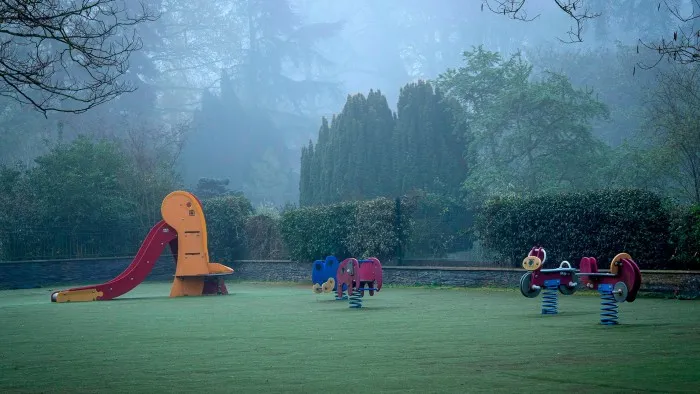The Unspoken Truth About the Baby Bust
As the world approaches the mid-21st century, a profound demographic trend looms on the horizon: a significant decline in birth rates in numerous countries around the globe. While this phenomenon often receives fleeting attention, the implications of this “baby bust” are far-reaching. From economic strains to shifts in cultural norms, the decrease in the number of babies born heralds challenges that could reshape societies.
The Baby Bust: What Does It Mean?
The term “baby bust” refers to a notable decline in birth rates, observed in various regions, particularly in developed countries. As of 2023, many countries including Japan, Italy, and parts of Eastern Europe are experiencing persistently low fertility rates, often below the replacement level of 2.1 children per woman. In the United States, the trend mirrors that of its peer nations, showcasing declining birth rates over recent decades.
Global Context of Birth Rates
According to data from the United Nations, global fertility rates have fallen dramatically over the past half-century. In 1960, the average global fertility rate was 5.0, but projections foresee it dropping to 2.4 by 2025. Countries like India and Brazil, once grappling with rapid population growth, are now facing challenges associated with aging populations and declining youth demographics.
The Causes Behind the Baby Bust
Several interrelated factors fuel the baby bust phenomenon:
- Economic Considerations: The high cost of living, particularly in urban areas, makes raising children a daunting financial endeavor. Families often prioritize economic stability over large families.
- Changing Gender Roles: Traditional gender roles have evolved, allowing women to pursue education and careers. This shift has led many women to postpone childbirth or choose to have fewer children.
- Access to Family Planning: Advancements in family planning methods provide individuals with more control over reproductive choices, leading to lower birth rates.
- Social Changes: Cultural shifts and increasing acceptance of child-free lifestyles affect family planning decisions, particularly among younger generations.
The Economic Impact of Fewer Births
The declining birth rate influences economies on several fronts:
1. Aging Population
As birth rates dip, the proportion of elderly people in the population rises. This demographic shift places increased pressure on social welfare systems, healthcare services, and pension schemes. Countries like Japan are already struggling with a shrinking workforce, which diminishes economic growth potential.
2. Labor Market Challenges
Fewer babies mean fewer individuals entering the workforce in the long run. Labor shortages could result, prompting employers to compete for a limited pool of workers. This situation may drive up wages but could also lead to inflationary pressures, impacting overall economic stability.
3. Consumer Market Trends
With fewer children being born, sectors focused on family-oriented goods and services may inevitably decline. Toy manufacturers, childcare services, and educational institutions may witness significant drops in demand, forcing businesses to pivot strategies to target a different demographic.
Social Implications of the Baby Bust
The ramifications of a declining birth rate extend beyond economics and seep into the fabric of society.
Cultural Shifts
Population dynamics significantly influence cultural evolution. As families become smaller, the socialization patterns of children shift, leading to profound changes in community landscapes. Intergenerational connections may become less frequent, which can affect the transfer of cultural knowledge and values.
Urbanization & Housing
With fewer births, certain locales may see a contraction in their need for housing and infrastructure, pushing urban planners to reconsider development strategies. Areas that traditionally attracted growing families might experience stagnation or even decline, while others could face oversupply in housing for families.
Is the U.S. Part of the Baby Bust Trend?
The United States offers a complex picture of the baby bust phenomenon. Initial reports by the Centers for Disease Control and Prevention indicated a steady decrease in fertility rates, dropping to 1.73 births per woman in 2020—a notable decline from the highs of the previous decades. Multiple socio-economic factors at play, including student debt burdens, housing market volatility, and changing cultural values, contribute to the disinterest in childbirth among younger generations.
The Impact of the Pandemic
The COVID-19 pandemic further exacerbated existing pressures. Economic uncertainty, health concerns, and shifting social dynamics prompted many families to delay childbirth or opt for smaller families. Preliminary findings suggested that the U.S. fertility rate declined by nearly 4% in 2020 alone.
Teenage Birth Rates
Interestingly, one notable aspect is the significant decline in teenage birth rates in the U.S. over the past decade. This age group, often viewed as a barometer for societal change, reflects the broader trend of intentionality in childbearing decisions.
Solutions and Strategies
While the challenges of the baby bust are undeniable, governments and policymakers can explore various strategies to address the decline in birth rates:
1. Family-Friendly Policies
Implementing policies that promote work-life balance could support family growth. Expanding parental leave, subsidizing childcare, and encouraging flexible work arrangements may encourage couples to have more children.
2. Immigration Policy Revisions
Countries facing worker shortages due to declining birth rates often turn to immigration as a solution. Developing immigration policies that allow skilled workers to settle could help counteract the effects of a dwindling population.
3. Education and Awareness
Campaigns focused on the societal benefits of family life may encourage individuals to rethink their family planning choices. Highlighting the joys of parenthood alongside the challenges can empower potential parents with the understanding that they can find balance.
Conclusion
The baby bust presents a myriad of implications that echo throughout economies, societies, and communities worldwide. While the decline in birth rates may appear as a byproduct of modernity, the unspoken truth is that it could lead to significant societal restructuring. It calls for thoughtful discourse and decisive action to address the challenges ahead. As the U.S. navigates its own path amidst global trends, a collective understanding and response to the impending demographic shift will be paramount. The world awaits to see how society will adapt to sustain future generations.







